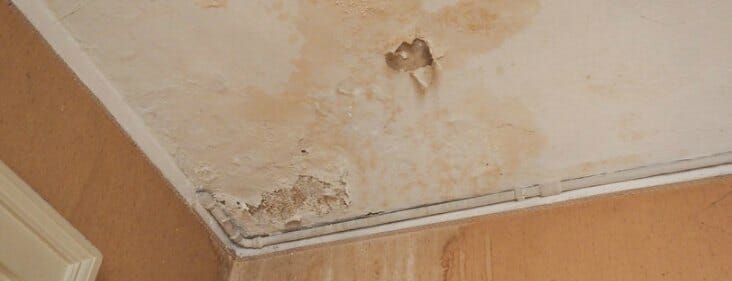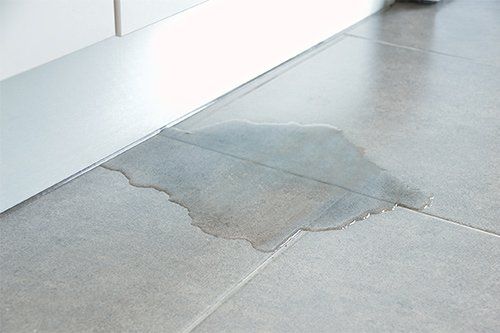This great article listed below on the subject of Top Causes of Home Water Leaks is especially interesting. Don't miss it.

Leakages not only cause waste of water but can likewise trigger unnecessary damages to your home as well as advertise undesirable natural development. Water leakages might go undetected given that most of the pipework in our house is concealed. By recognizing as well as looking for everyday circumstances that create leaks, you can shield your residence from future leakages as well as unnecessary damage. Today, we will consider 6 leakage triggers that might be causing your pipelines to drip.
Instantaneous temperature level adjustments.
Extreme temperature modifications in our pipelines can cause them to increase and contract unexpectedly. This development and tightening might trigger fractures in the pipelines, particularly if the temperature are below cold.
Rusty water systems
This might be the cause of staining or bending on your water pipes. If our plumbing system is old, take into consideration changing the pipelines since they are at a greater danger of deterioration than the newer models.
Malfunctioning Pipeline Joints
Pipe joints can degrade over time, resulting in water leakages. If you have noisy pipes that make ticking or banging sounds, specifically when the hot water is turned on, your pipeline joints are probably under a whole lot of pressure.
Encroaching roots
A lot of water leaks start outside your home as opposed to inside it. If you observe a sudden decline in water pressure, claim in your faucet, take time to go out as well as analyze your backyard. You may see wet patches or sinkholes in your yard, which may indicate that tree origins are attacking water lines causing water to seep out. You can have your plumber look for breach, especially if you have trees or shrubs near your home.
Poor Water Connectors
Sometimes, a leak can be triggered by loosened hose pipes as well as pipes that provide your devices. Typically, changing is what triggers the loosened water Links. You might locate when it comes to a cleaning equipment, a pipe may spring a leak as a result of drinking during the spin cycle. In case of a water connections leakage, you may notice water running directly from the supply line or puddles around your home appliances.
Blocked Drains
Blocked drains could be frustrating and inconveniencing, but they can occasionally wind up causing an overflow causing break pipelines. Maintain getting rid of any kind of materials that may go down your drains pipes that could clog them to avoid such inconveniences.
All the above are reasons for leakages but not all water leakages arise from plumbing leakages; some leaks might originate from roofing leaks. All leaks should be fixed immediately to prevent water damages.
Leakages not just create waste of water yet can additionally trigger unneeded damages to your house as well as promote undesirable organic development. By looking and recognizing for day-to-day scenarios that create leakages, you can protect your residence from future leaks as well as unnecessary damages. Today, we will certainly look at 6 leakage creates that might be creating your pipes to drip.
At times, a leakage can be triggered by loosened hose pipes and pipes that provide your home appliances. In instance of a water links leakage, you may see water running directly from the supply line or pools around your home appliances.
TYPES OF WATER LEAKS YOU SHOULD BE FAMILIAR WITH
Shower Fixture Water Leaks
If you notice a water leak near your shower fixture, perform an inspection to confirm if you are able to find broken caulk lines. As your shower fixture becomes older, it is not uncommon for water to leak onto the other side of the frame. To fix this type of plumbing leak, scrape off the old caulk and run a new bead of it around the shower fixture to seal up any fractured crevices and holes.
Bathtub Drainage Water leaks
To fix this type of leak in a bathtub, remove the drain flange and clean it. Next, you should also remove the rubber gasket located beneath the tub’s drain hole. Buy a replacement gasket that matches the old version and install it in the same location. Once the drain flange and rubber gasket are installed, apply a small amount of silicone caulk to the drain to prevent water leakage below your tub.
Water Pipe Leaks Behind Walls
Issues such as discolored grout and loose shower tiles may be caused by a water pipe leak behind the walls in your bathroom. To fix this plumbing leak, you will be required to remove the tiles, grout, or caulk in your shower. Once the tiles in your shower have been removed, perform an inspection of the drywall to confirm if it’s moist or wet. If you notice water marks or mold on the wall, this is an indicator of a water pipe leak.
Toilet Leaks
Nobody likes a toilet leak. It can cause water damage to the subfloor, joists, or even the ceiling in the room below. To combat this type of water leak, you will need to reinstall your toilet with a brand new ring of wax. If the toilet sits uneven, be sure to add toilet shims to correct the issue. Do you notice a broken bolt slot or flange? We recommend performing a new metal flange installation to remediate this issue.
Sink Water Leaks
To prevent damage to the beautiful counter tops in your kitchen or bathroom, tighten the base of your sink to prevent a water leak. Next, scrape away any old caulk around the sink and apply a fresh coat. Prior to using the kitchen or bathroom sink, you will need to secure the fixture to the countertop with the clips located beneath the sink rim to prevent a water leak.
https://www.fenwickhomeservices.com/blog/6-types-of-water-leaks-you-should-be-familiar-with/

As an avid reader about How to detect water leaks in your home, I imagined sharing that excerpt was essential. You should set aside a second to promote this post if you appreciated it. Thank-you for your time spent reading it.
Maintain plumbing standards; contact us.